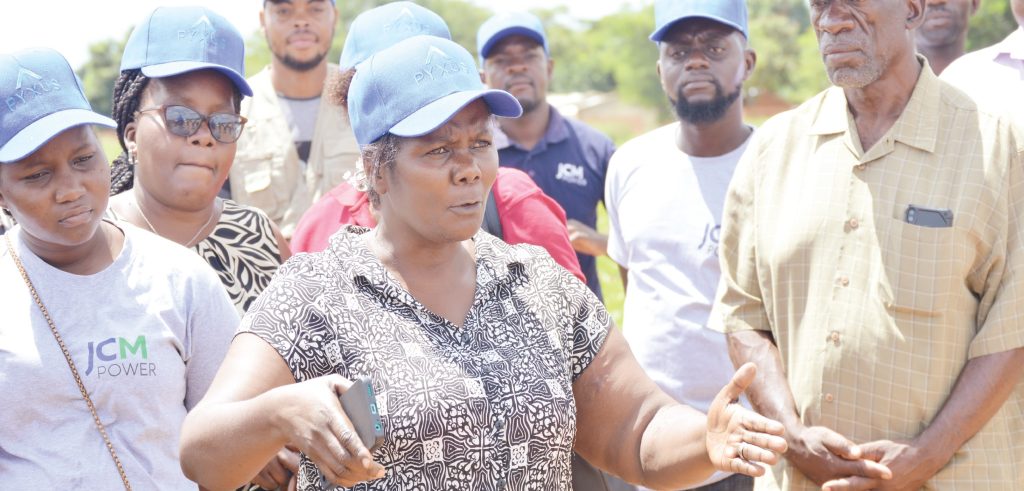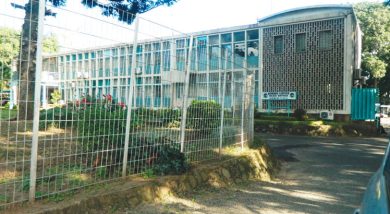Oiling megafarm wheels
In the vicinity if countless rows of lush groundnuts crop, a cluster of farmers, animated under umbrellas of different colours and sizes, curiously follow a presentation spiced with elaborate field demonstrations.
They have arrived from Central Region-based agriculture cooperatives and the groups are braving the El-Niño-inspired unforgiving heat with their minds firmly hooked on lessons about modern groundnut large-scale farming, the megafarms way.

This, more than anything, is a pursuit for the government-inspired initiative aimed at ratcheting up commercial agriculture into a consistent foreign exchange generator to rescue the economy.
The economy is currently bruised, largely by trade deficits blamed on the country’s failure to export more and import less. The consequences are grave; forex shortage is widespread and inflation continues to climb.
Mpale Farm owned by groundnuts buying and processing company, Pyxus Agriculture Limited, on the fringes of Dowa District, the training is hashing out finer details about the best varieties, pesticides and fertiliser.
And, the nods of approval amidst a raucous chorus of questions from farmers confirm how electrifying the session is and the transformational power it holds.
“Modern varieties are marketable and, therefore, have the potential to give farmers enough profits,” observes Pyxus managing director Ronald Ngwira.
He further quips that groundnuts are supposed to be cultivated using modern farming technologies, including planting early-maturing varieties, planting in double rows and timely application of pesticides and fungicides.
Ngwira notes that a majority of local farmers do not earn fat profits from groundnuts due to planting of old varieties.
He quantifies that groundnut fields grown in line with modern technologies such as new varieties and treated with the right pesticides and fertiliser produces about 2 700 kilogrammes (kg) per hectare.
“This is in sharp contrast to the 900kg that a farmer who does not follow modern methods harvests,” Ngwira says.
In the megafarms layout, Pyxus is tasked with unleashing the potential of the groundnuts industry which, according to the Malawi Investment and Trade Centre, contributes 25 percent to the agriculture economy.
And, the Pyxus managing director paints a picture of conquest in this role. He says they have designated four models categorised as smallholder and mega farm producers, in-growers and out-growers.
“In-growers are those growing groundnuts on Pyxus leased farms. They are doing twenty to forty hectares. The out-grower model we are engaged with farmers who are managing smallholder farmers around them.
“Megafarms are about large and independent farmers scattered throughout the country,” he explains, adding that in total they are working with over 10 000 contracted farmers.
Ministry of Agriculture, controller of agriculture extension and technical services Alfred Mwenifumbo, who also heads the Megafarms Support Unit with which Pyxus organised the farmers field visit, describes the mega farms initiative as on track.
In total, he says 483 mega farmers joined the crusade in the current farming season.
He said: “The majority of the farmers, 230 thereabout, have planted maize and then we have a group of farmers that have grown soyabeans and groundnuts.
“The groundnuts farmers are supported as off-takers by Pyxus. Those who have grown soya are working with Paramount Holdings which is going to buy the soya they have grown.
“The maize farmers’ off takers are the National Food Reserve Agency. All these farmers have signed off-taker contracts.”
Mwenifumbo says the mega farmers are being financed through the Malawi Agriculture and Industrial Investment Corporation (Maicc) which is mandated to support commercially viable investments in the public and private sectors.
“We negotiated with the Ministry of Finance through Parliament for a loan facility of K20 billion that is managed by Maicc. So, most of these farmers are getting the production input support through the Mega Farm Unit from Maicc.
“The farmers that grew maize got fertiliser support; five bags per hectare. If a farmer planted 10 hectares, we gave them 50 bags. Those who did a hundred hectares we gave them 500 bags of fertiliser. Overall, the project of the mega farm has started on a very good note,” he says.
A groundnut farmer at Mpale Farm under Mega Farms Unit Programme, Florie Chagwira Betha, reveals that she jumped on the initiative upon calculating the potential benefits.
She has been allocated ten hectares but would jump at an opportunity to extend her tract.
“The good thing about the programme is that it gives the farmer an opportunity to the land for groundnut cultivation for free. They, then, provide farmers with the much-needed inputs on loan,” Chagwira Betha expounds.
Launching the One-Stop Private Sector Megafarms in August last year, President Lazarus Chakwera described the initiative as a game-changer for the economy as much of the country’s foreign exchange revenue comes from agricultural commodities.
“Given the forex challenge we have faced in the recent past, it is clear that our long-term solution has to involve boosting and diversifying agriculture productivity for export,” said Chakwera.
The initiative, among others, seeks to facilitate deals in financing, fertiliser, inoculant, seed suppliers and farm business plan development consultants.
It targets 844 medium and large-scale farmers in commercial farming, earning praise from Mangochi South Parliamentarian Lilian Patel.
Last Friday, in her contribution during the current budget meeting, the acting United Democratic Front leader, said she was one of the megafarmers targeting to benefit from the initiative.
She proposed the establishment of agriculture-tailored banks that would offer farmers loans with low interests and longer repayment periods.
“Megafarms initiative is the right direction because the smallholder farmer cannot feed the whole of Malawi. We need a bank specifically for agriculture like we had a commercial bank before.
“We should have loans in which you pay back in three years. It is unsustainable to expect a farmer to go for a commercial loan with interest rates of over 26 percent and only for one year,” she said.
Patel also advocates for support towards mechanisation: “We also need leasing and finance where you could get tractors which are in good condition. I am sure that as we go along the improvements will be there. Sometimes it’s better to be positive.”
As most parts of the country are experiencing dry spells, the legislator says it is time for the mega farms to focus on irrigation.
“I am not talking about the big irrigation projects. We have realised that without irrigation you can’t get anywhere. Even myself, I don’t think I will grow anything next year unless I invest in irrigation.
“Right now, all of us are having sleepless nights. The BP (blood pressure) has gone up because the rains aren’t coming yet the crops are about to mature.
“The farmers are having sleepless nights, praying day in and day out for the rains to come. We can’t carry on like this,” she said.





